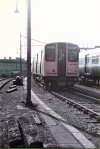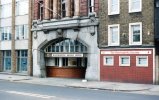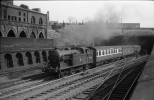nlogax
Established Member
For years I've been curious to know if there has been any usage of the stub track that disappears behind the feeder station at Waterloo towards where the old Necropolis station used to be. During the 2017 track renewals the south sidings were rationalised and I was surprised to see the stub track renewed as part of the work. The stub itself isn't electrified but it does sit atop a bunch of DC feeds.
In all my years using Waterloo station I've not once seen a loco on that small section. Has anyone seen anything on it, was it kept around for any purpose?
In all my years using Waterloo station I've not once seen a loco on that small section. Has anyone seen anything on it, was it kept around for any purpose?



